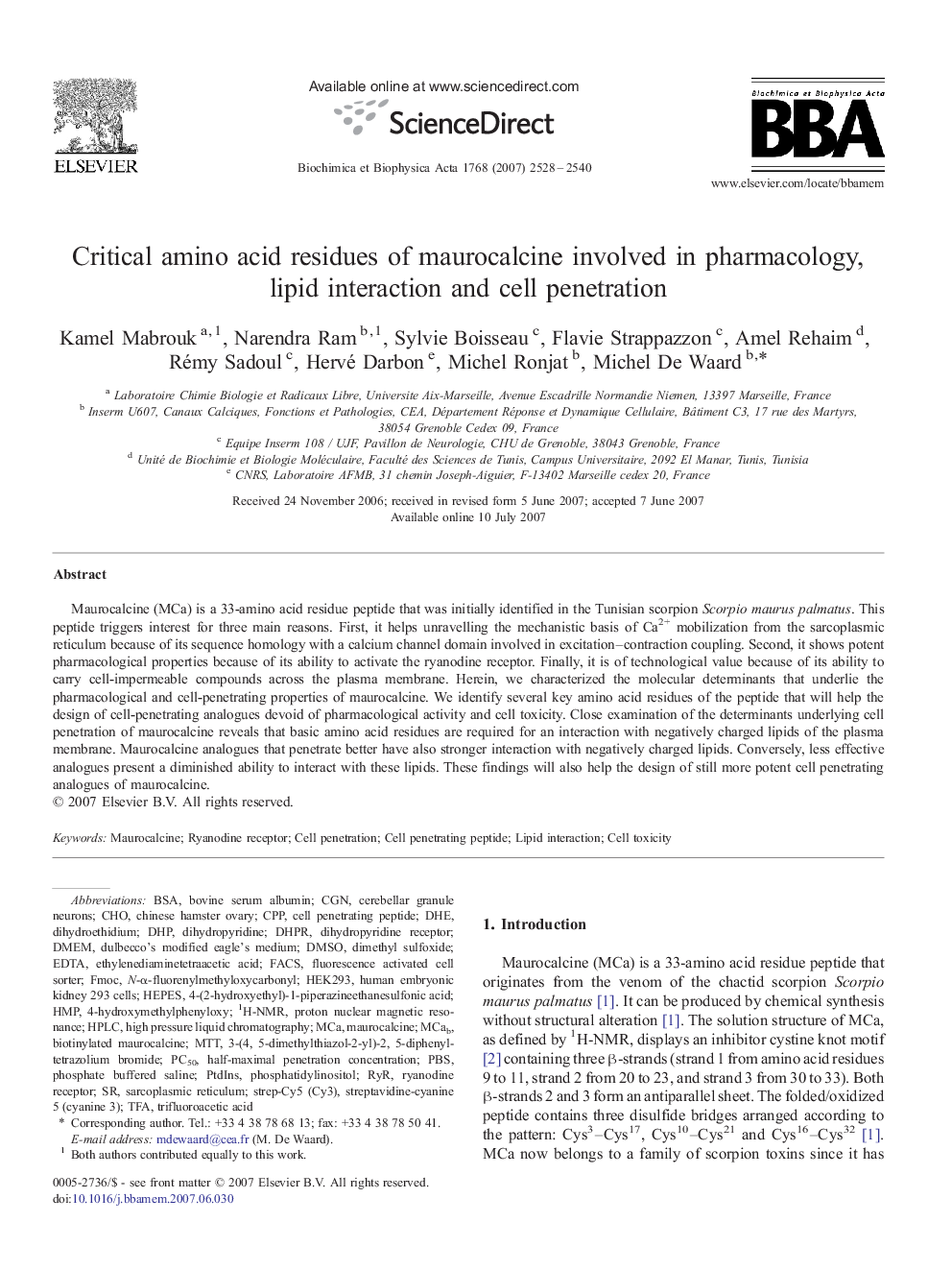| Article ID | Journal | Published Year | Pages | File Type |
|---|---|---|---|---|
| 1945675 | Biochimica et Biophysica Acta (BBA) - Biomembranes | 2007 | 13 Pages |
Maurocalcine (MCa) is a 33-amino acid residue peptide that was initially identified in the Tunisian scorpion Scorpio maurus palmatus. This peptide triggers interest for three main reasons. First, it helps unravelling the mechanistic basis of Ca2+ mobilization from the sarcoplasmic reticulum because of its sequence homology with a calcium channel domain involved in excitation–contraction coupling. Second, it shows potent pharmacological properties because of its ability to activate the ryanodine receptor. Finally, it is of technological value because of its ability to carry cell-impermeable compounds across the plasma membrane. Herein, we characterized the molecular determinants that underlie the pharmacological and cell-penetrating properties of maurocalcine. We identify several key amino acid residues of the peptide that will help the design of cell-penetrating analogues devoid of pharmacological activity and cell toxicity. Close examination of the determinants underlying cell penetration of maurocalcine reveals that basic amino acid residues are required for an interaction with negatively charged lipids of the plasma membrane. Maurocalcine analogues that penetrate better have also stronger interaction with negatively charged lipids. Conversely, less effective analogues present a diminished ability to interact with these lipids. These findings will also help the design of still more potent cell penetrating analogues of maurocalcine.
